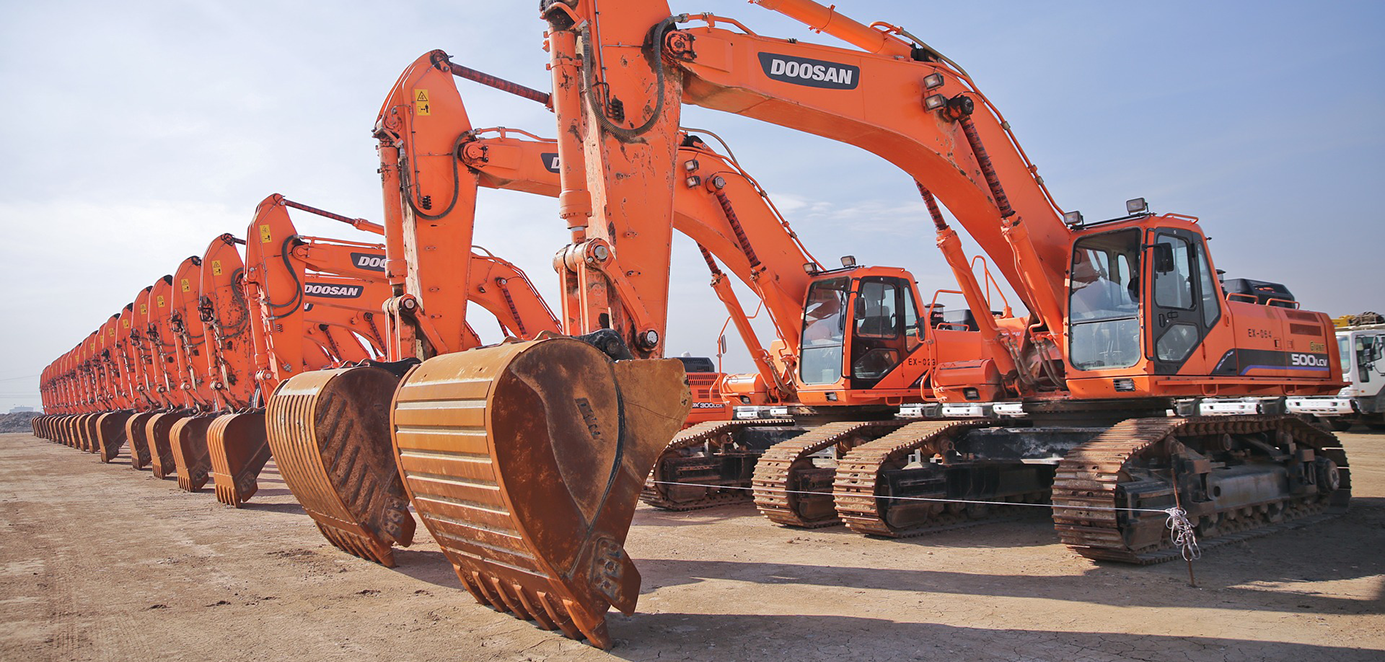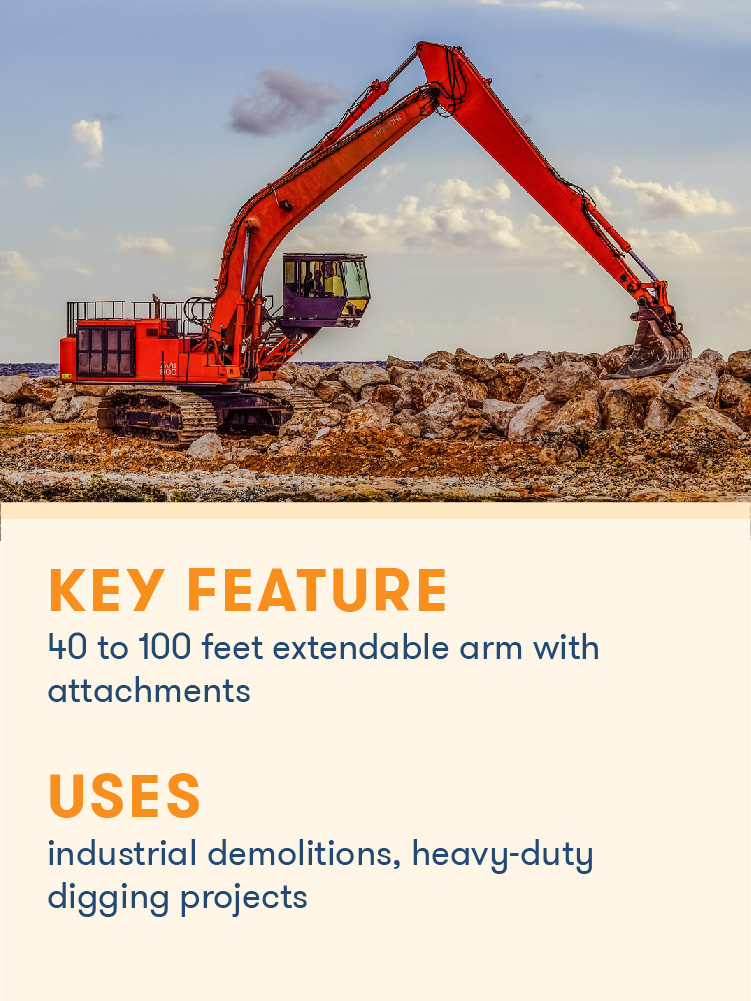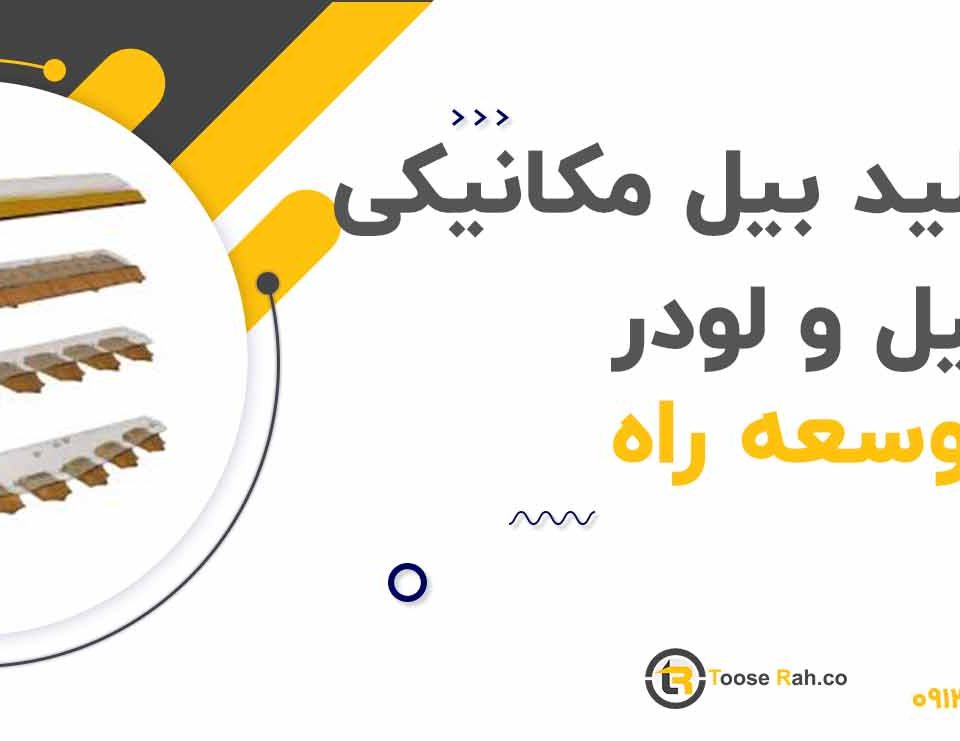- نیاز به پشتیبانی دارید؟
- 09131175244 و 09135667353
- 031-37887450
- info@toseerah.com
بیل مکانیکی و انواع آن

کفشک بیل مکانیکی و بلدوزر و انواع مختلف آن
2019/09/11
لودر زنجیری و لودر لاستیکی توسعه راه
2019/09/14توسعه راه عرضه کننده ی انواع قطعات یدکی بیل مکانیکی

When you need to lift heavy amounts of soil, an excavator is a must on your job site. Excavators are popular earthmoving vehicles that feature a bucket, arm, rotating cab, and movable tracks. These components provide superior digging power and mobility, allowing this heavy equipment to perform a variety of functions, from digging trenches and breaking holes to lifting away waste and excavating mines.
What are excavators used for? Excavators are applied to a variety of contractor and industrial needs, including mining, road construction, building construction, and demolitions.
There are many types of excavators — smaller machines handle digging and drilling functions, while larger excavators have different tools for heavy-duty projects. When renting your excavator, you’ll want to consider its size and speed as well as the working conditions, such as the amount of space and the soil types.
The most common excavator types are crawlers, dragline excavators, suction excavators, skid steer, and long reach excavators. We’ll go over what each type of excavator type is and what work each one is best used for.
Crawler Excavators

Their chain wheel system allows them to slide down and scale hills with less risk, making them suitable for grading hilly areas and landscaping uneven terrain. While slower than other excavators, crawlers provide overall greater balance, flexibility, and stability.
Dragline Excavators

The hoist rope raises and lowers the bucket, while the dragline pulls the bucket toward the driver.
Due to their weight, draglines are often assembled on site. The unique system of this type of excavator is commonly used in large scale civil engineering projects like canal dreading.
Suction Excavators

Also known as vacuum excavators, these excavators feature a suction pipe capable of letting air providing up to 400 horsepower. The excavator first releases a water jet to loosen the ground.
The pipe, which contains sharp teeth at the edge, then creates a vacuum that carries away soil and debris up to 200 miles per hour. A suction excavator is ideal for delicate underground applications, as it can reduce the chance of damage by more than 50 percent.
Skid Steer Excavators

Unlike standard excavators, skid steers have booms and buckets that face away from a driver. This orientation allows the attachments to reach over the cab instead of around it, making them useful in more narrow areas and maneuvering tricky turns.
They are often used for digging pools, site cleaning, residential work, and debris removal, where space is more limited and objects are spread out apart.
Long Reach Excavators

As its name suggests, a long reach excavator features a lengthier arm and boom sections. The design allows for better operation in hard-to-reach locations. The excavator’s extendable arm can reach over 100 feet horizontally.
These excavators are best used for demolition projects like structural crumpling and breaking down walls and applications that are over a body of water. Different attachments can be affixed to the arm to perform additional jobs such as shearing, crushing, and cutting.


